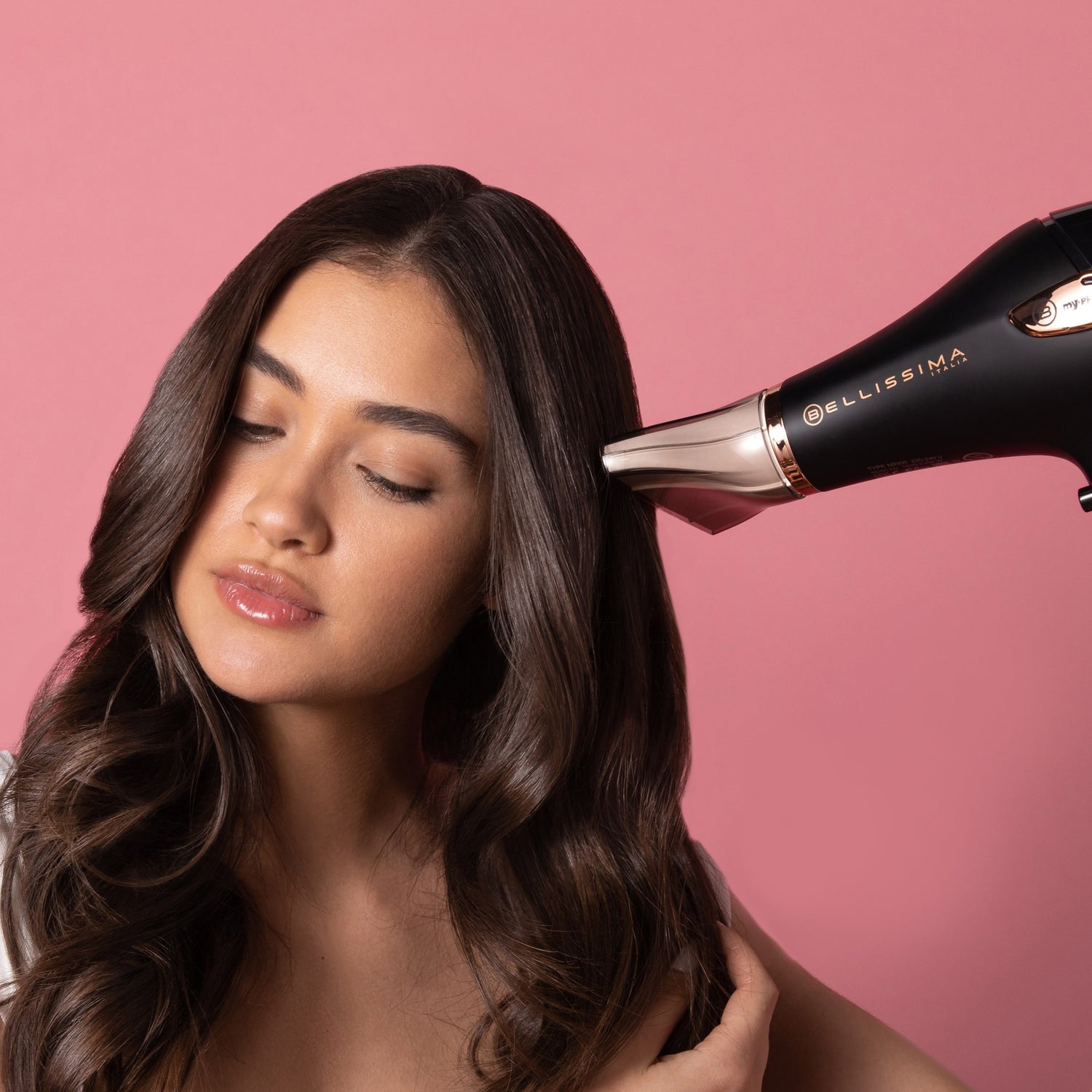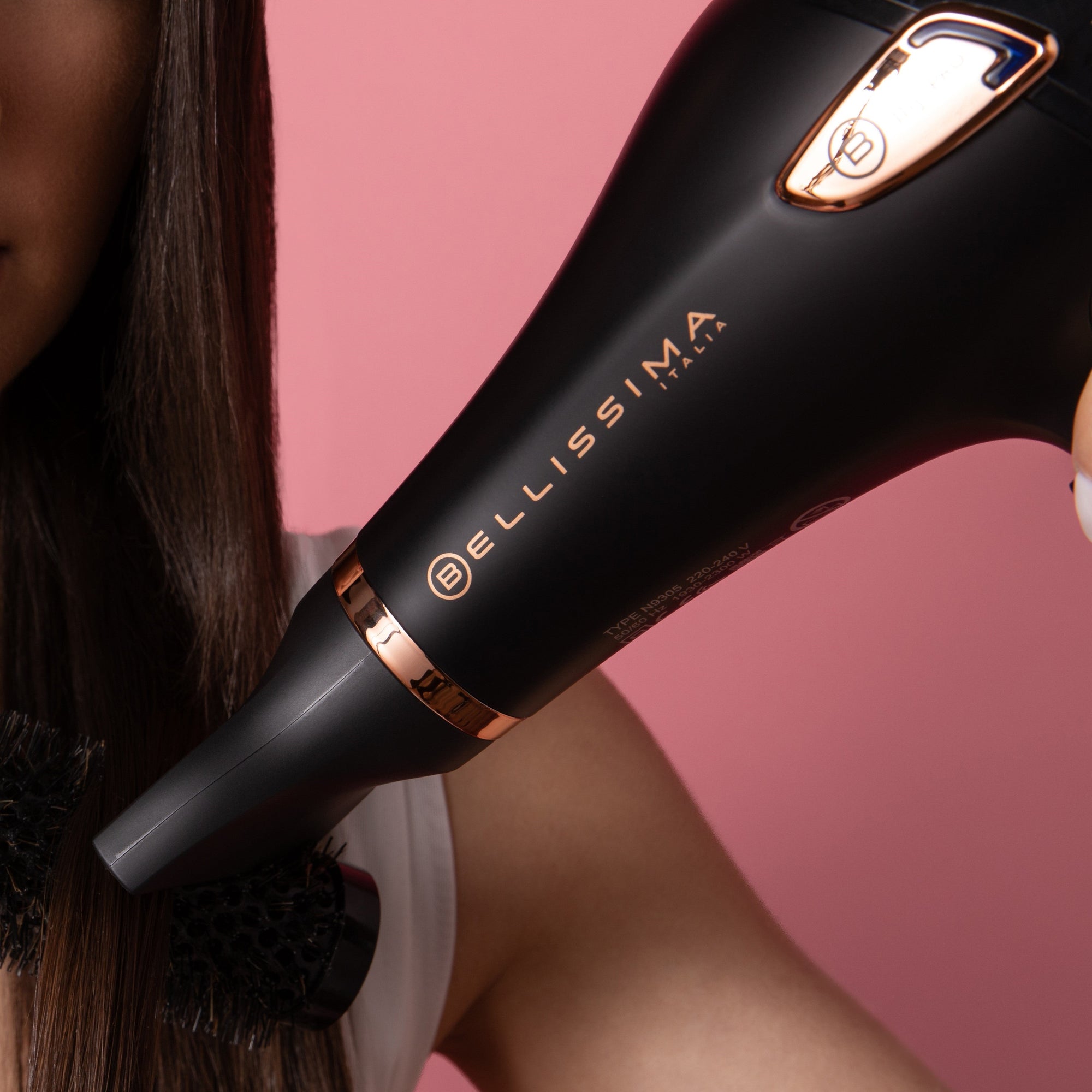In today's world, being mindful of our energy consumption is more important than ever.
Whether you're a young adult juggling bills or a homeowner keen on reducing your monthly expenses, every penny counts. Knowing the cost of running everyday appliances, like your hair dryer, can impact your budget and environmental footprint.
With energy costs on the rise, many households are looking for ways to reduce their energy usage. By familiarising yourself with the usage of your hair dryer, you can improve your knowledge to implement cost-saving measures. This can lead to savings over time, allowing you to set aside funds for other areas of your life.
Delve into the details of hair dryer energy consumption with Bellissima Italia. This article will help you make decisions that benefit your wallet and the planet!
Table of contents:
- Understanding your hair dryer energy usage
- Work out the cost of running your hair dryer
- Cost breakdown for different hair types
- Energy efficiency of hair dryers
- Tips to reduce your hair dryer energy costs
- Hair dryer running costs FAQs
Understanding your hair dryer energy usage
When it comes to understanding the cost of running a hair dryer, the most critical factor to consider is its wattage.
Wattage measures the power usage of your hair dryer. The higher the wattage, the more electricity it uses. This affects how much you'll pay on your energy bill every time you dry your hair.
Typical wattage range for hair dryers
Hair dryers typically fall within a wattage range of 1,000 to 2,400 watts. Here's a quick breakdown of what that means:
1,000W - 1,200W
These are generally travel hair dryers or compact models. They use less power, making them more energy-efficient. However, they're less effective for those with thicker hair or those needing quicker drying times.

Using a lower-wattage hair dryer could end up costing you more money in the long run as you spend longer getting your hair dry. We recommend keeping your travel hair dryer for when you’re on the move, but investing in a more powerful machine for your home.
1,200W - 1,800W
This range is common for many standard household hair dryers. They offer a balance between energy usage and performance, providing enough power for most hair types without impacting your energy bill.
1,800W - 2,400W
These high-wattage models are often professional-grade or designed for fast drying and styling. Their higher wattage means they use more electricity, but can reduce drying times if you have thicker hair. A hair dryer offering a quicker drying time can be more energy efficient in the long run.

By making an informed choice about the wattage of your hair dryer, you can enjoy quick styling while being mindful of your energy use and costs.
Work out the cost of running your hair dryer
The running cost of a hair dryer is primarily affected by:
- Wattage: Higher wattage dryers consume more electricity.
- Usage time: Longer drying times increase energy use.
- Energy cost: The price per kWh of electricity that you pay for.
- Efficiency features: Hair dryers with energy-saving technologies (e.g., ionic, ceramic) can reduce running costs.
According to Ofcom, the average cost for electricity is 24.50 pence per kWh in 2024.
Input the wattage of your hair dryer and the average time you use it per day into our calculator. This works out an estimate of how much it costs to run your hair dryer each day, month, and year:
Hair Dryer Electricity Cost Calculator
Daily Cost: - £
Monthly Cost: - £
Yearly Cost: - £
Cost breakdown for different hair types
The cost of running a hair dryer can vary depending on your hair type and drying time. Here’s a detailed look at the estimated annual costs of using a 2,400W hair dryer for different hair types, with the average energy cost being £0.25 per kWh.
Fine and medium-length hair
Average Drying Time: 10 minutes
For those with fine to medium hair, the drying time is generally shorter. The estimated annual cost of running a 2,400W hair dryer, assuming an average drying time of 10 minutes per day, is approximately £35.28.
Thick or long hair
Average Drying Time: 20 minutes
For individuals with thick or long hair, drying takes more time. The estimated annual cost for using a 2,400W hair dryer, with a drying time of 20 minutes daily, is around £70.56.
Energy efficiency of hair dryers
Not all hair dryers are created equal in terms of energy usage. Newer, more energy-efficient models can help you make a more informed choice and save on your energy bills.
Traditional vs. newer models
Traditional hair dryers
Older, traditional hair dryers tend to be less energy-efficient. These models often use a higher wattage to achieve the same drying results. This means they use more electricity and can contribute to higher utility bills.
As they're more traditional models, they lack features that optimise energy usage. This leads to longer drying times, as well as increased energy consumption.
Newer models
Newer hair dryer models are designed with energy efficiency in mind. Advances in technology have led to the development of hair dryers that deliver a more effective drying performance while using less power. These models incorporate various features to enhance their efficiency and reduce your energy use.
Common features of energy-efficient hair dryers:
Ceramic materials
Hair dryers equipped with ceramic components are designed to distribute heat evenly. These dryers, like our Ceramic Hair Dryer, heat up quickly and maintain a consistent temperature. This helps to reduce the need for excessive drying time and contributes to a more energy-efficient drying process.

Ionic technology
Ionic hair dryers use negatively charged ions to break down water molecules in your hair, which helps to speed up the drying process. This technology reduces drying time, meaning less energy is used overall. Ionic dryers can help reduce frizz, making your hair smoother and shinier with Ion Care Technology.
Adjustable heat settings
Energy-efficient hair dryers often come with adjustable heat settings. These allow you to choose the optimal temperature for your hair type. By using lower heat settings, you can reduce your energy usage while still achieving fantastic results.
Tips to reduce your hair dryer energy costs
Here are some tips to help you reduce your hair dryer energy usage:
Use a lower temperature setting or eco-mode
Modern hair dryers come equipped with multiple heat and speed settings, including an eco-mode. Opting for lower power settings or eco-mode can significantly reduce your energy usage.
Clean and maintain your hair dryer
Regularly clean the filter on your hair dryer and ensure it’s in good working condition for optimal performance. If your hair dryer is working to its full capacity, then it will take less time to dry your hair and use less energy.
Drying hair to a damp state before using the hair dryer
Pre-drying your hair with a towel before using the hair dryer can help reduce drying time and energy usage. This approach not only saves energy but also reduces heat exposure, which can be beneficial for maintaining healthy hair.
Investing in a newer, more energy-efficient hair dryer
Investing in a newer model of hair dryer that is designed with energy efficiency in mind can lead to long-term energy savings. Look for features such as ionic technology, ceramic materials, and adjustable heat settings. These features help to dry your hair more quickly and efficiently. They use less energy due to innovative technology, with airflow three times stronger than traditional dryers.
Although you must consider the cost of the initial investment, reducing your energy usage can translate to lower bills and environmental impact over time.
Explore our range of hair dryers if you’re looking to upgrade to a newer, more energy efficient hair dryer.
Hair dryer running costs FAQs
What are watts?
Watts are a unit of power that measure the rate at which energy is used or produced. In simple terms, watts quantify how much electrical power an appliance consumes or generates at any given moment.
For appliances like hair dryers, the wattage indicates how much power the device uses. For example, a hair dryer with a rating of 2,400 watts consumes 2,400 watts of electrical power while it’s in use.
What are kilowatt-hours?
Kilowatt-hours are a unit of energy measurement used to quantify the total amount of electricity consumed over time. One kilowatt-hour is equivalent to using 1,000 watts of power for one hour. It’s the unit used by energy providers to bill for electricity consumption.
Do higher wattage hair dryers cost more to run?
Yes, higher wattage hair dryers generally use more electricity and cost more to run. A 2,400W hair dryer will typically have higher running costs compared to a 1,200W model. However, higher wattage models often dry hair faster, which can offset the higher power usage.
How often should I replace my hair dryer?
Replacing your hair dryer every 3-5 years can help ensure you benefit from the latest energy-efficient technologies.
Older models may become less efficient over time, leading to higher running costs. Investing in a new model with modern features can help reduce energy consumption and save money in the long run.


